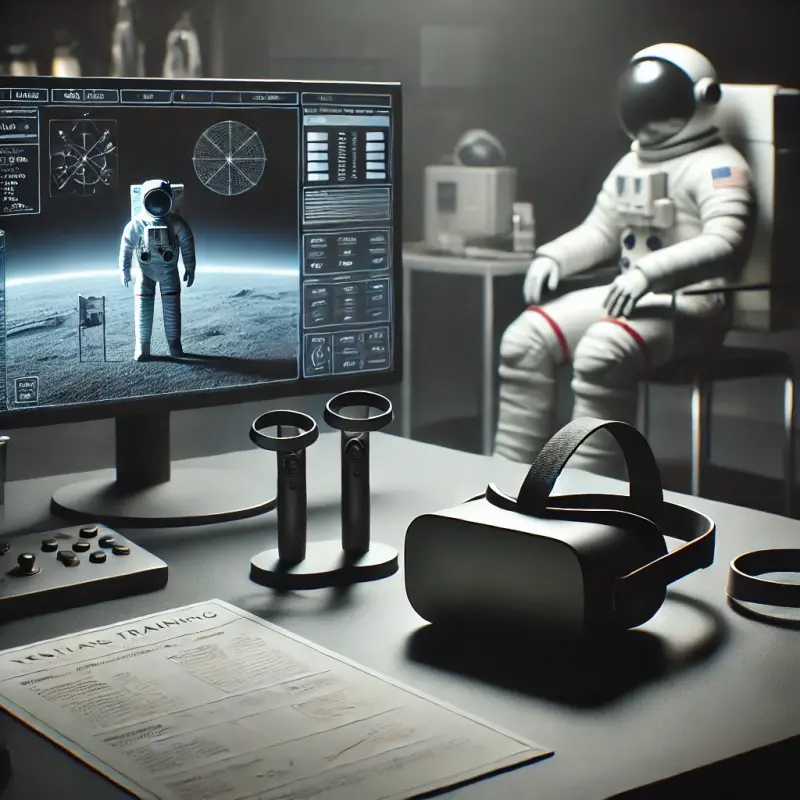Virtual Simulations for Space Exploration Training: How VR Prepares Astronauts

Space exploration is one of humanity’s most challenging endeavors, requiring rigorous preparation and training. Astronauts face extreme environments, complex systems, and unpredictable scenarios that demand precision, adaptability, and resilience. In recent years, virtual reality (VR) has emerged as a revolutionary tool in astronaut training, offering immersive simulations that replicate the unique conditions of space.
This article explores the role of VR in preparing astronauts for space exploration, its benefits, and the innovative ways this technology is transforming the future of space training.
Why Virtual Reality for Astronaut Training?
Training astronauts involves recreating the harsh realities of space, including microgravity, confined spaces, and the absence of immediate support. Traditional methods, such as neutral buoyancy tanks and physical mockups, are effective but have limitations in scalability and flexibility. VR addresses these challenges by providing:
- Immersive Environments: Realistic simulations of space settings, including the International Space Station (ISS), lunar surfaces, and deep space missions.
- Cost-Effectiveness: Reducing the need for expensive physical replicas and facilities.
- Adaptability: Tailoring training scenarios to specific mission objectives and astronaut needs.
Applications of VR in Space Exploration Training
1. Simulating Zero-Gravity Environments
One of the most critical aspects of astronaut training is adapting to microgravity. VR simulations replicate zero-gravity conditions, allowing astronauts to practice tasks like maneuvering, handling tools, and assembling equipment in weightless environments. This reduces the reliance on parabolic flights or underwater training, which are resource-intensive.
2. Spacewalk Preparation
Extravehicular activities (EVAs), or spacewalks, are among the most complex and hazardous tasks astronauts perform. VR enables detailed practice of EVAs, including:
- Navigating the exterior of the ISS.
- Repairing satellites or spacecraft.
- Conducting scientific experiments.
Astronauts can experience realistic hazards, such as equipment malfunctions or unexpected debris, within the safety of a virtual environment.
3. Emergency Response Drills
Space missions are fraught with risks, from air leaks to system failures. VR simulations create high-stakes emergency scenarios, training astronauts to remain calm, follow protocols, and make critical decisions under pressure.
4. Mission-Specific Training
Every space mission has unique objectives and challenges. VR allows for mission-specific simulations, such as:
- Lunar exploration, including navigating the moon’s surface and conducting geological studies.
- Operating advanced spacecraft systems in deep-space missions.
- Testing habitation and resource utilization on Mars analogs.
5. Psychological Training
The psychological demands of space travel, including isolation and confinement, can impact astronaut performance. VR offers virtual environments that simulate these conditions, helping astronauts develop coping mechanisms and teamwork skills.
Benefits of VR in Astronaut Training
1. Enhanced Realism
VR creates lifelike scenarios, allowing astronauts to familiarize themselves with the visuals, sounds, and dynamics of space missions.
2. Repeatability
Unlike physical training setups, VR simulations can be repeated multiple times with consistent conditions. This ensures thorough preparation and mastery of tasks.
3. Reduced Costs
Building and maintaining physical replicas of spacecraft or space environments is costly. VR offers a scalable and cost-effective alternative without compromising training quality.
4. Safe Training for High-Risk Scenarios
Simulating emergencies or hazardous situations in VR eliminates the risks associated with real-world practice.
5. Global Accessibility
VR systems can be deployed anywhere, enabling training for international space agencies and commercial spaceflight participants.
Examples of VR in Action
NASA
NASA has integrated VR into its astronaut training programs, using tools like the Virtual Reality Lab (VRL) to simulate EVAs and ISS operations. These simulations help astronauts practice tasks such as navigating the Canadarm2 robotic arm and repairing external components.
European Space Agency (ESA)
ESA’s CAVES program uses VR to simulate cave exploration missions, which serve as analogs for space missions. This trains astronauts in navigation, teamwork, and problem-solving in confined environments.
Commercial Spaceflight Companies
Private companies like SpaceX and Blue Origin are adopting VR to train space tourists and mission specialists. VR prepares them for launch, docking, and re-entry procedures, ensuring safety and confidence.
Challenges of VR in Space Training
While VR offers numerous advantages, it also presents challenges:
- Technical Limitations: High-fidelity simulations require advanced hardware and software, which can be costly to develop and maintain.
- Physical Feedback: VR lacks the tactile feedback of real-world training, such as the resistance of tools or the physical sensation of movement.
- User Fatigue: Prolonged use of VR headsets can lead to discomfort or motion sickness, affecting training effectiveness.
The Future of VR in Space Exploration
As VR technology continues to evolve, its applications in astronaut training will expand. Future developments may include:
- Haptic Feedback Integration: Adding tactile sensations to simulate the physical interactions of space tasks.
- AI-Powered Simulations: Using artificial intelligence to create dynamic scenarios that adapt to astronaut actions and decisions.
- Mixed Reality Systems: Combining VR with augmented reality (AR) to overlay virtual elements onto physical training environments.
- Collaboration with Robotics: Integrating VR with robotic systems to practice controlling rovers and drones on extraterrestrial surfaces.
Conclusion
Virtual reality is revolutionizing astronaut training, providing immersive, adaptable, and cost-effective solutions for preparing astronauts for the challenges of space exploration. By simulating zero-gravity environments, spacewalks, emergencies, and mission-specific scenarios, VR enhances both the safety and effectiveness of training programs.
As space agencies and private companies continue to push the boundaries of human exploration, VR will play an increasingly vital role in equipping astronauts with the skills and resilience needed for success. Whether preparing for lunar missions or the first crewed journey to Mars, virtual simulations are paving the way for humanity’s next giant leap.
Articles
Join our mailing list for notifications about the newest and most engaging articles sent straight to your email.